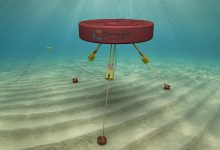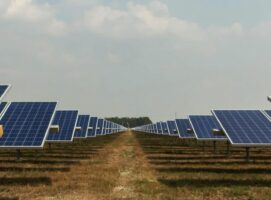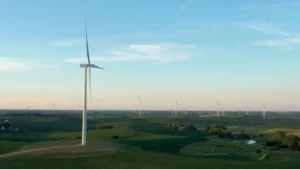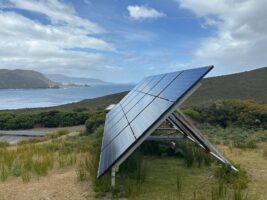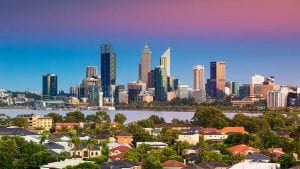The Australian wave energy technology of Carnegie Clean Energy has been tapped to compete in the first round of a European program designed to advance promising technologies to commercial viability and uptake.
ASX-listed Carnegie said on Wednesday that its fully owned subsidiary CETO Wave Energy Ireland had been selected as one of seven contractors for Phase 1 of the €20 million EuropeWave Pre-Commercial Procurement program.
Subject to contract signing later this month, the company will be given €291,000 ($A463,000) to deliver a CETO tank testing campaign and a CETO concept design for sites in Scotland and the Basque Region.
Carnegie said its CETO wave energy generation technology had been selected for phase one of the EuropeWave PCP after meeting rigorous selection criteria including for performance, survivability, availability and affordability.
With almost €20 million in funding for the three phases of the program, which runs from 2022 to 2026, the EuropeWave PCP is a collaboration between Wave Energy Scotland (WES), a subsidiary of the Scottish Government’s Highlands and Islands Enterprise, and the Basque Energy Agency (EVE).
The program’s goal is to advance promising wave energy converter systems to a point from which they can be developed to a commercial level through other national and or regional programs as well as through private investment.
Ultimately, three of the initial seven competitors will be selected to deploy their prototypes at either the Biscay Marine Energy Platform (BiMEP) in the Basque Country or the European Marine Energy Centre (EMEC) in Scotland. Phase 1 starts January 03, 2022, and runs for seven months.
In a statement on Wednesday, Carnegie CEO Jonathan Fiévez said that programs like the EuropeWave PCP showed the urgency and the opportunity to drive wave energy and accelerate global efforts towards decarbonisation.
“Being selected for this contract is a strong third-party validation of the technology we’ve developed and will help us to establish a solid framework for future commercial project investments,” Fiévez said.
“We are excited to demonstrate the technical and commercial potential of our CETO technology and thrilled to be part of the EuropeWave PCP program which will show future investors the wealth of exciting opportunities emerging within the wave energy industry.
“Wave energy is beginning to gain traction and will complement existing renewables such as wind and solar. Harnessing the power of our vast oceans is a vital step in our transition to the use of sustainable clean energy, and to achieve net zero emissions as soon as possible.”
CETO Wave Energy Ireland’s selection for the program marks another win for Carnegie in overseas markets, after a choppy few years in its own home market of Australia.
The company, which started its life as Carnegie Wave Power, went into voluntary administration in early 2019 after a series of blowouts and losses in former subsidiary microgrid business Energy Made Clean and the last-minute termination of a $16 million project contract planned for WA waters.
Carnegie was reinstated to the ASX in October of the same year, with the company’s chairman at the time, Terry Stinson, saying the business had experienced “a very significant cultural reset” that would re-focus funds and efforts on its proprietary CETO technology.
“We continue to believe that our CETO technology, as part of the emerging wave energy industry, can be a major contributor to the reduction in harmful emissions and contribute to a cleaner world for generations to come,” Stinson said.
In October of this year, Carnegie revealed it had received funding to install and operate a scaled demonstrator of technology spun out of its CETO generators, called MoorPower, that would reliable renewable energy for offshore facilities, starting with the moored vessels used in the aquaculture sector.
The $3.4 million project is being delivered in collaboration with a consortium of partners including two of Australia’s largest aquaculture companies, Huon Aquaculture and Tassal Group, with $1.35 million in funding from the Tasmania-based Blue Economy Cooperative Research Centre.
Like the CETO system, MoorPower will use a Power Take-Off (PTO) system that converts the orbital motion of the waves into clean electricity. But rather than being a stand-alone buoy system (pictured below), the scaled down technology will be designed to be integrated with moored offshore vessels.
For the EuropeWave PCP, a further rigorous selection process will follow the conclusion of phase one next year, with five companies out of the seven to be selected for phase two, and then three companies for the third and final phase.
Carnegie said on Wednesday that the final contract for phase one was expected to be signed in December 2021, with shareholders to be kept informed of its progress in the competition throughout 2022.
Good, independent journalism takes time and money. But small independent media sites like RenewEconomy have been excluded from the millions of dollars being handed out to big media companies from the social media giants. To enable us to continue to hold governments and big business to account on climate and the renewable energy transition, and to help us highlight the extraordinary developments in technology and projects that are taking place, you can make a voluntary donation here to help ensure we can continue to offer the service free of charge and to as wide an audience as possible. Thank you for your support.

